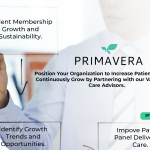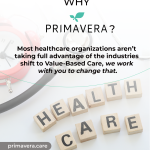Re-imagining the patient experience is at the core of Telehealth. For a platform based on the ease of communication, there have never been more options to connect, communicate, and track the progress of your patients. But telehealth platforms are more than just two-way radios with a built-in calendar and a touch screen.
Best Practices for Digital Communication in the Patient Experience
Digital health platforms will have communication systems in place that make it both easy for your patients to reach you, and for you to reach out to your patients. Easy communication means more than one communication option; calls, messages, and alerting are three ways to receive and send important updates.
The platform should keep in mind that not all patients are tech savvy, so calling and messaging should be a single touch process where possible, and no downloading of apps or processes that require a lot of direction should be involved in the spirit of universal accessibility.
We have an overall conception of communication that it needs to be instant, easy to access, and provide links, or further communication options. Our phone contacts link to our social media profiles, which link to our professional profiles, etc. For the sizable elderly population, this is a bit of a foreign concept – but not an unnecessary one. In fact, this idea of “drilling down” into a patient’s detailed history is paramount for digital health.
Real-time Communication
Have a communication system in place that feeds practitioners and providers real-time information regarding risk assessment, patient status, and general data from hospitals that affect your ability to provide the best care for the patient, and the best information to the patient’s care team.
Communication Barriers
A benefit of the technology wave in healthcare is that software and applications can be implemented to easily overcome historically large obstacles like geography or language barriers. Health platforms have the resources to engage patients regardless of their demographics, education level, or mobility with aids like translation apps, easy access to scheduling a network of supportive vendors, and transferable data between the patient and financial programming, all through assigned caseworkers that stay constantly updated through alerts and reporting.
The Patient Experience: Going Beyond the Screen
There are two ways that patient care needs to go ‘beyond the screen’ to elevate the patient experience.
First, it’s important to engage in one-on-one conversations with patients and have a good “bedside” manner – though with telehealth, the bedside may not be a physical hospital, but rather the patient’s own home. This comes with a few unique challenges; the patient’s home likely lacks the resources of a medical environment. This makes asking questions and scheduling follow ups critical. A health platform creates a format and a space to engage clients in a clinical way without the clinical setting.
Second, is to monopolize on the information and data you gather, and to work with a platform that provides analysis and helpful tools, but also synchronizes with the entire software suite so you can monitor and plan patient care securely and effectively.
Primavera Creates a Clinical, Digital Space
Risk assessment is something we’ve discussed before as it has many applications as the tech health world expands.
We all know you can’t just snap your fingers and have any professional you need at your fingertips…or can you? An advantage to prioritizing your patient population by their program, risk assessment, diagnosis, or population, is that you can give the patient the impression of instant availability. Not because you have magical psychic powers, but because you have a data-powered system that helps you schedule professionals when they’re most needed.
A more personal application of assessment is scheduling appropriate follow ups with your patients. By prioritizing risk, you are able to schedule timely follow ups and inform the patient’s entire care team of the process, making communication seem less situational, and more like a neighborly check-in.
Wellness checks can be automated too, assigned, and carried out by any member of a patient’s care team to promote preventive care habits and conversations that work toward further evaluating the patient’s health and assessing their risk – while helping to keep you and your team on time when juggling multiple appointments and patients.
Frequent and consistent communication goes a long way toward building trust and eliciting helpful responses from your patients but also affords other preventive benefits. Patient isolation, especially in the elderly and immobilized is a major contributing factor to overall health.
In a research study done on Patient Experience in the Digital Age, the idea that personal health technology provides patients with more resources is confirmed, but also tells us that we must raise questions of incorporating “human” elements into digital care:
“Though digital technology can empower patients, it can also alter their overall experience, which, in turn, will affect their usage. Hence, managers and policymakers need to recognize and better understand how patients perceive and experience these technologies.”
As patients age, they become more reliant on others for care and interaction. A compassionate way to approach digital health is to recognize that it gives certain populations a state of independence that they may have lost – or may not have ever been able to experience by putting the responsibility of their health and the ability to communicate effectively into the palm of their hands.
Patient care is Easier Together. Learn more about Primavera’s cutting edge case management features by scheduling a demo today.








Recent Comments